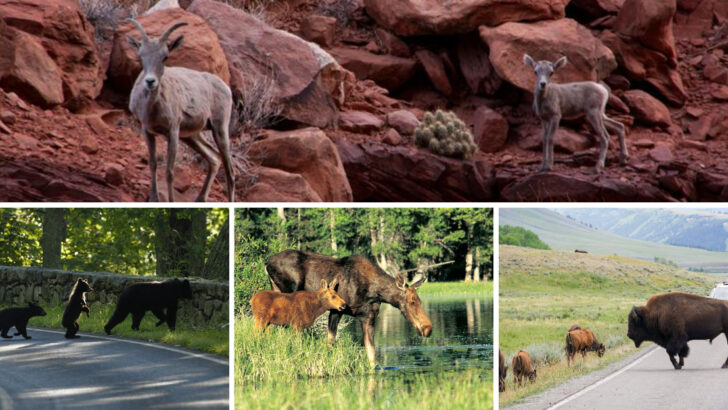Nothing beats the thrill of spotting a wild animal in its natural habitat—especially when you don’t have to leave your car to do it! Across the U.S., roads wind through breathtaking landscapes where bison roam, alligators lurk, and bears lumber through the trees. If you’re ready for an adventure, these road trips will bring you face-to-face with some of nature’s most incredible creatures.
Picture this: a herd of elk crossing a misty mountain road at sunrise or a bald eagle soaring overhead as you cruise along a scenic highway. These aren’t just lucky moments—they’re waiting for you on some of the best wildlife drives in the country.
From the swamps of Florida to the rugged coasts of Alaska, each route offers a front-row seat to nature’s wildest spectacles. So grab your map, pack some snacks, and hit the road. The animals are waiting!
Yellowstone National Park, Wyoming
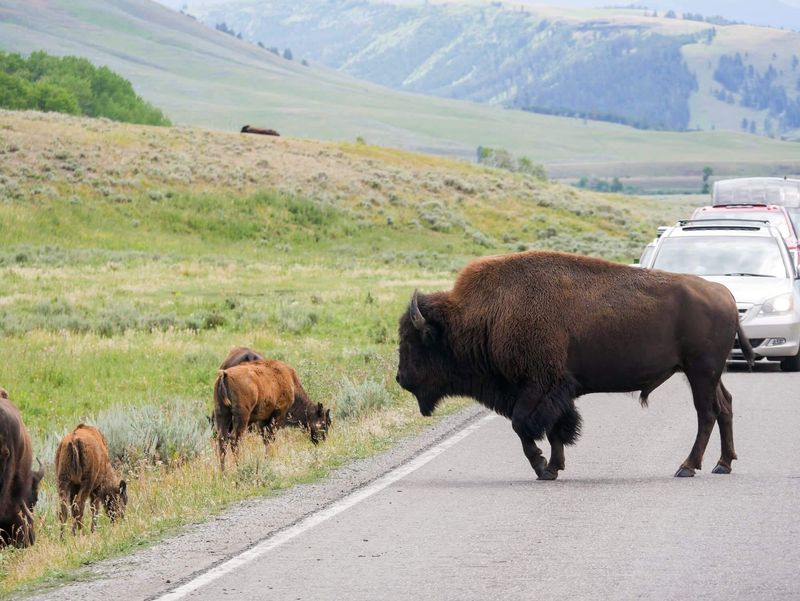
Yellowstone National Park spans across Wyoming, Montana, and Idaho. It is home to the largest concentration of mammals in the lower 48 states. Bison, elk, and wolves roam the land. Visitors can drive the Grand Loop Road for opportunities to see these animals. The Lamar Valley is especially known for wolf sightings.
Early morning drives increase chances of seeing wildlife active at dawn. Always keep a safe distance from animals and use binoculars for a closer look. The park’s geothermal features offer a surreal backdrop to wildlife viewing, making it a unique experience for nature enthusiasts.
Everglades National Park, Florida
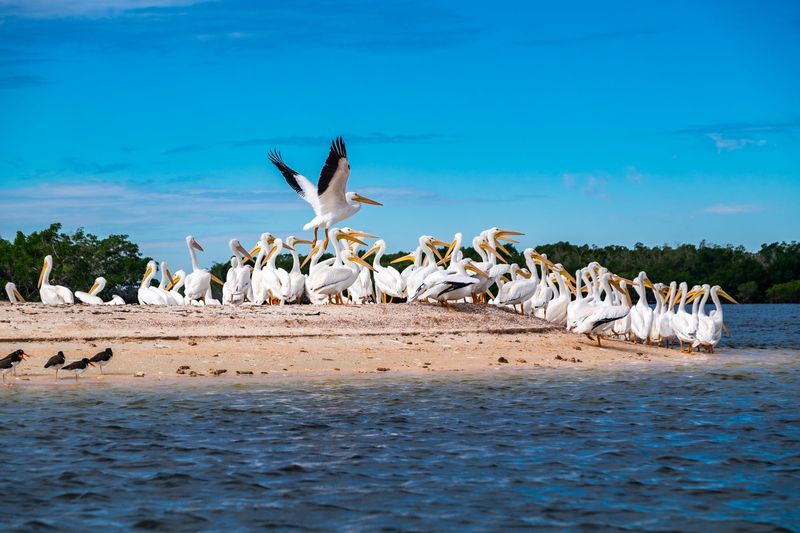
Everglades National Park is a vast 1.5-million-acre wetland. It is teeming with wildlife including alligators, manatees, and a variety of bird species. The park’s unique ecosystem is best explored by canoe or kayak.
The Shark Valley Loop Road offers a 15-mile route ideal for cycling and wildlife viewing. Guided tours provide insights into the park’s diverse habitats and resident species. Remember to bring sun protection and plenty of water. The Everglades is a prime location for observing the coexistence of terrestrial and aquatic life in a picturesque setting.
Great Smoky Mountains National Park, Tennessee and North Carolina
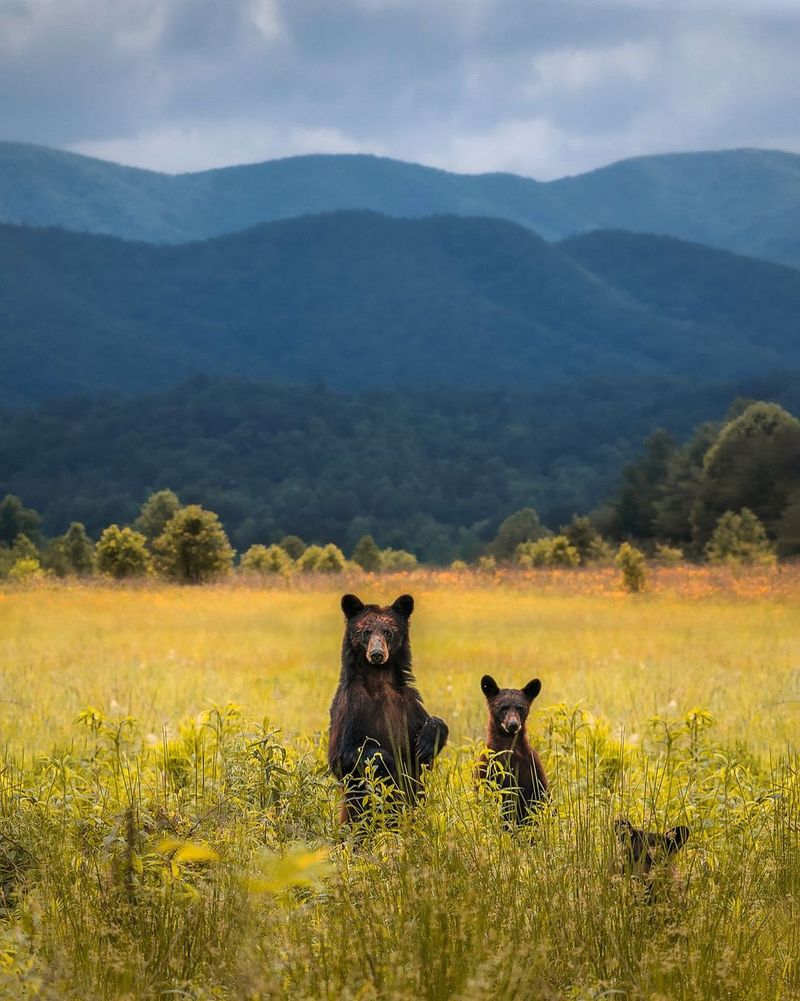
Straddling the border between Tennessee and North Carolina, the Great Smoky Mountains National Park is a haven for wildlife enthusiasts. The park’s lush forests are home to black bears, white-tailed deer, and over 200 species of birds.
The Cades Cove loop road is a popular spot for wildlife observation, offering stunning views of the mountains. Early mornings and late evenings are ideal times to spot bears. With its rich biodiversity, the park provides countless opportunities for photography and nature study. Always practice caution and respect the wildlife you encounter.
Denali National Park, Alaska

Denali National Park offers a breathtaking setting for wildlife viewing. Encompassing over six million acres, it is a sanctuary for grizzly bears, caribou, and moose. The only road in the park, Denali Park Road, takes visitors deep into the wilderness.
Bus tours are available for those who prefer guided experiences and can increase sighting chances. The park’s stunning landscapes provide a dramatic backdrop for viewing wildlife in their natural setting. With its vast open spaces and diverse habitats, Denali is a must-visit for any wildlife lover seeking adventure.
Rocky Mountain National Park, Colorado
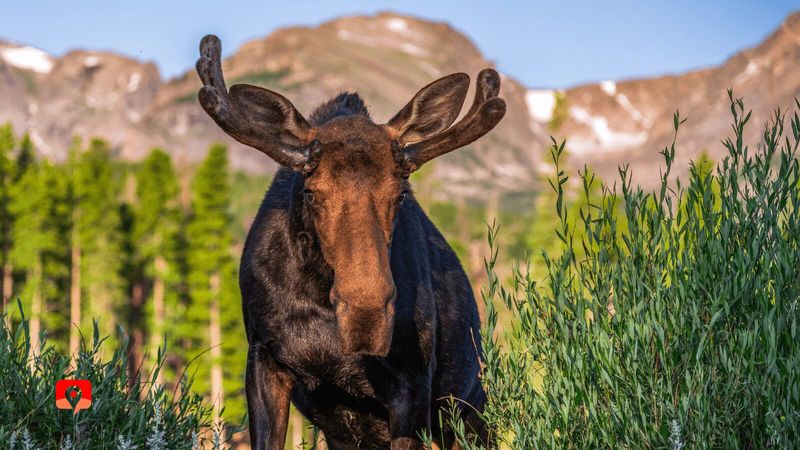
Rocky Mountain National Park in Colorado is a stunning destination for wildlife viewing. Elk are commonly seen grazing in the meadows, especially during the autumn rut.
The Trail Ridge Road offers an incredible drive with opportunities to see bighorn sheep and marmots. The park’s diverse ecosystems range from montane to alpine, supporting a wide variety of animals. Visitors should be prepared for changing weather conditions and high elevations. Whether you’re hiking or driving, the park’s scenic beauty and wildlife make it a memorable experience for all ages.
Olympic National Park, Washington
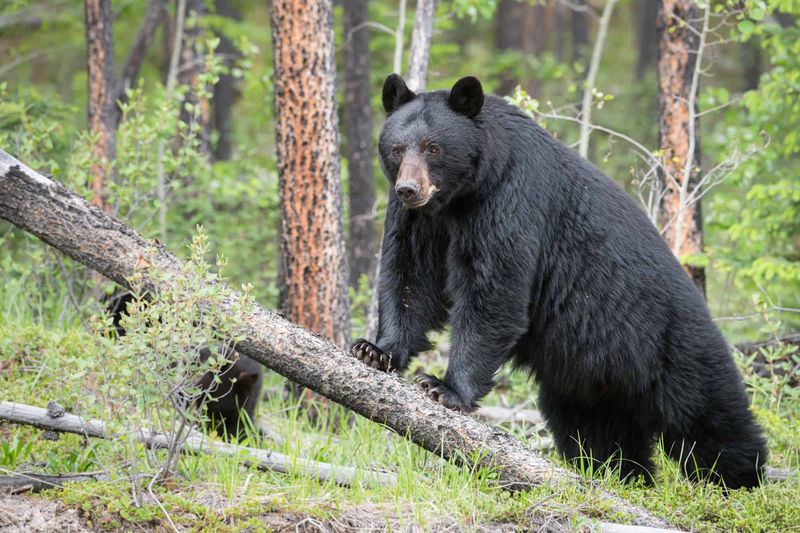
Olympic National Park offers a rich tapestry of landscapes and wildlife. From rugged coastlines to dense rainforests, it supports diverse species such as black bears and Roosevelt elk.
The coastal areas are great for spotting sea otters and seals. The Hoh Rain Forest provides a lush backdrop for birdwatching and hiking. With its varied ecosystems, Olympic National Park offers endless opportunities for wildlife enthusiasts. It’s important to dress in layers and be prepared for rain. Each area of the park presents a unique opportunity to connect with nature and observe its inhabitants.
Acadia National Park, Maine
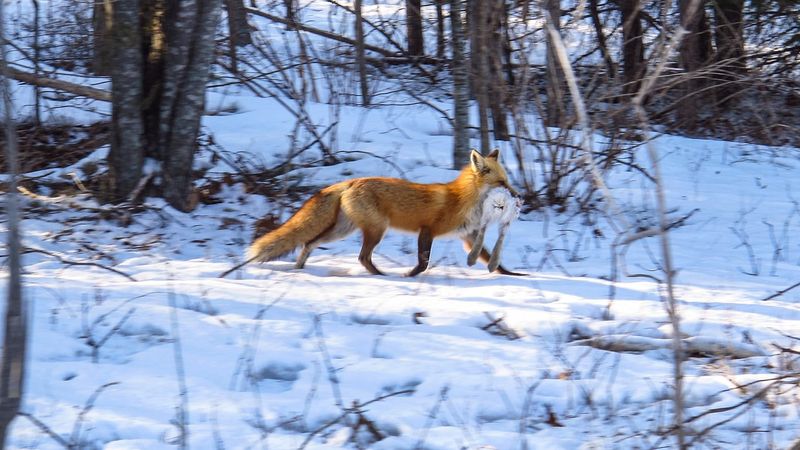
Acadia National Park, located on the rugged coast of Maine, is a prime spot for observing a variety of wildlife. Bald eagles, peregrine falcons, and seals are commonly seen along the shorelines.
The park’s carriage roads provide excellent opportunities for biking and wildlife viewing. The diverse habitats of Acadia support an abundance of bird species, making it a birdwatcher’s paradise. Visitors should take time to explore the tidal pools, which are teeming with marine life. As with all wildlife viewing, patience and respect for nature are key to a rewarding experience.
Zion National Park, Utah
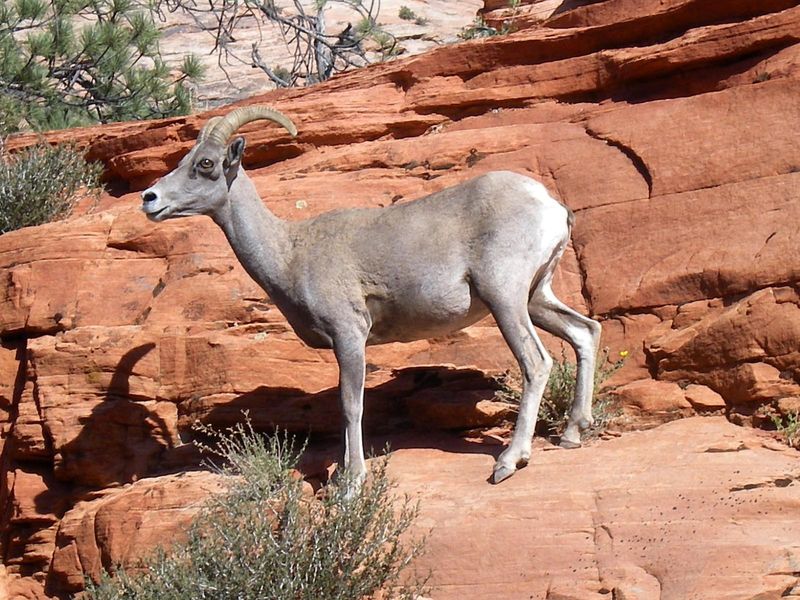
Zion National Park is a stunning desert landscape known for its red rock cliffs and unique wildlife. The park is home to bighorn sheep, mule deer, and a variety of reptiles and birds.
The scenic Zion Canyon is a popular area for spotting wildlife, especially early in the morning or late in the afternoon. Hiking trails offer intimate views of the park’s diverse ecosystems. Visitors should stay hydrated and be mindful of the desert climate. Zion provides a captivating setting for observing animals adapted to arid environments, making it a fascinating destination for adventurers.
Glacier National Park, Montana
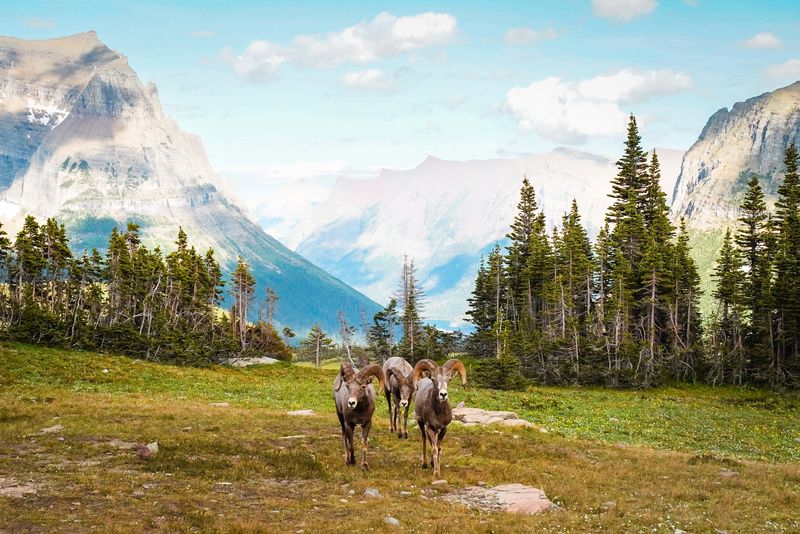
Glacier National Park is known for its dramatic landscapes and diverse wildlife. Home to mountain goats, grizzly bears, and more, the park offers incredible viewing opportunities.
The Going-to-the-Sun Road is a must-drive for wildlife enthusiasts, providing access to stunning vistas and animal habitats. Early summer is a great time to visit, as animals are more active. The park’s pristine wilderness supports a delicate balance of nature, making it a haven for photographers and nature lovers. Always respect the park’s regulations and keep a safe distance from wildlife to ensure a safe visit.
Yosemite National Park, California

Yosemite National Park is a treasure trove for wildlife enthusiasts. The park’s diverse landscapes are home to black bears, mule deer, and an array of bird species.
The Mariposa Grove of Giant Sequoias offers a spectacular backdrop for wildlife viewing. Visitors can explore the park’s many trails, where animals are often seen in their natural habitats. Yosemite’s stunning granite formations and lush valleys create an iconic setting for observing wildlife. Whether hiking or driving, remain alert and respectful of the animals and their environment to ensure an enjoyable visit.
Shenandoah National Park, Virginia
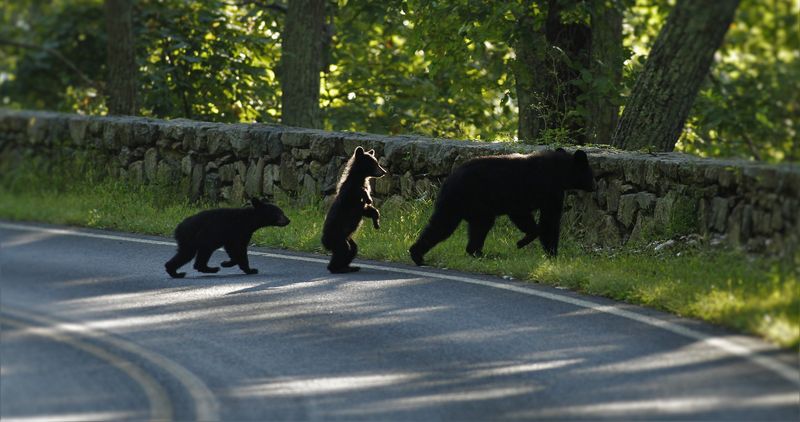
Shenandoah National Park is located along the Blue Ridge Mountains of Virginia and is a haven for wildlife. The park is known for its abundance of white-tailed deer, black bears, and songbirds.
Skyline Drive offers a scenic route through the park, with numerous overlooks for wildlife observation. The park’s diverse ecosystems provide ample opportunities for photography and exploration. Visitors should keep an eye out for the park’s smaller inhabitants, such as frogs and salamanders, which thrive in the park’s moist environments. Respect for nature and adherence to park guidelines ensure a safe visit.
Canyonlands National Park, Utah
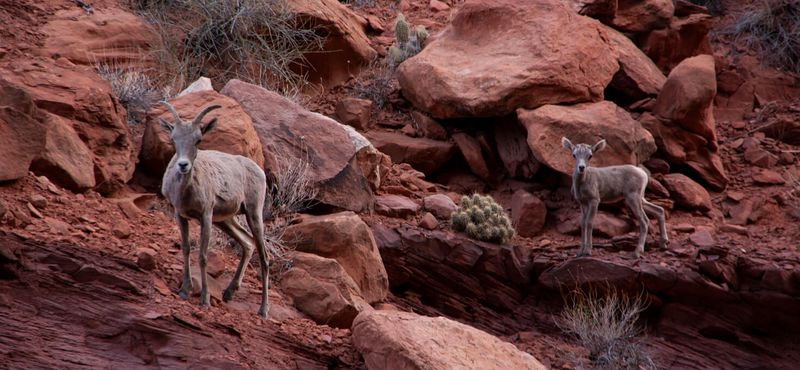
Canyonlands National Park is a striking desert landscape located in southeastern Utah. The park’s vast canyons and mesas are home to a variety of wildlife, including golden eagles, coyotes, and lizards.
The Island in the Sky district provides stunning panoramic views, ideal for spotting birds of prey. Explorers can enjoy hiking and driving through this rugged terrain, finding hidden spots for observing wildlife. As with all desert environments, visitors should carry plenty of water and sun protection. Canyonlands’ breathtaking vistas and unique wildlife make it a captivating destination for nature lovers.
Grand Teton National Park, Wyoming
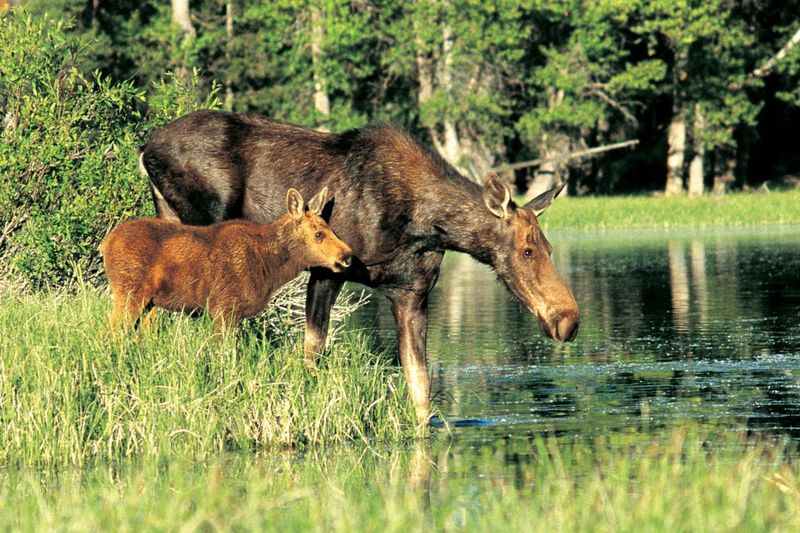
Grand Teton National Park, located in northwestern Wyoming, is renowned for its stunning mountain scenery and diverse wildlife. Moose, elk, and grizzly bears are among the park’s many inhabitants.
The Teton Park Road offers numerous pullouts for wildlife viewing, especially at dawn and dusk when animals are most active. The park’s varied habitats, from wetlands to alpine meadows, support a rich biodiversity. Visitors should come prepared for variable weather conditions and respect park guidelines to ensure a safe and enjoyable experience. The majestic Tetons provide a perfect backdrop for unforgettable wildlife encounters.
Joshua Tree National Park, California
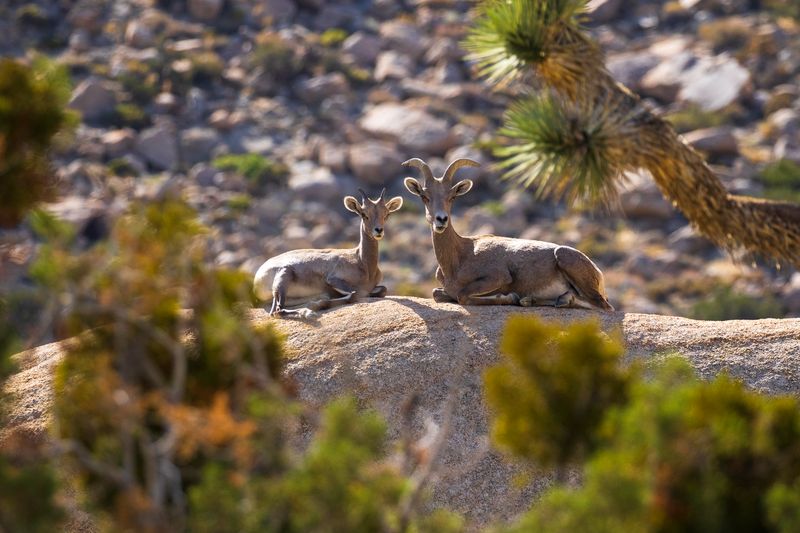
Joshua Tree National Park is a unique desert environment known for its iconic Joshua trees and rich biodiversity. The park is home to desert tortoises, jackrabbits, and a variety of reptiles and birds.
Driving through the park reveals striking landscapes and opportunities to spot wildlife adapted to arid conditions. Hiking trails offer close encounters with the park’s flora and fauna. Visitors should be mindful of the extreme temperatures and come equipped with water and sun protection. Joshua Tree’s distinctive scenery and wildlife make it a fascinating destination for adventurers seeking solitude and natural beauty.
Big Bend National Park, Texas
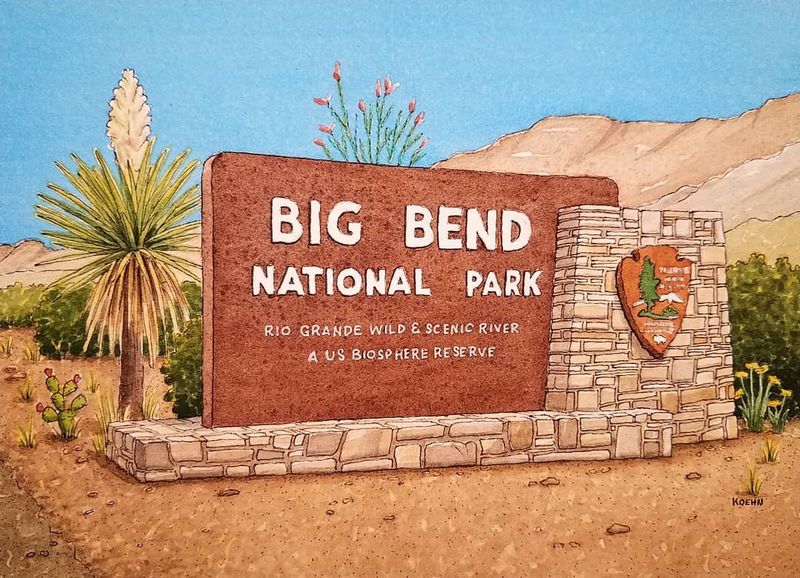
Big Bend National Park, located in southwest Texas, offers a unique blend of desert, river, and mountain ecosystems. The park is home to javelinas, coyotes, and over 450 species of birds.
The Ross Maxwell Scenic Drive provides access to beautiful vistas and wildlife viewing spots. The river canyons offer a peaceful backdrop for observing the park’s diverse wildlife. Visitors should prepare for varying temperatures and rugged terrain. With its remote location and striking landscapes, Big Bend is a perfect destination for those seeking adventure and tranquility in the heart of nature.
Sequoia and Kings Canyon National Parks, California
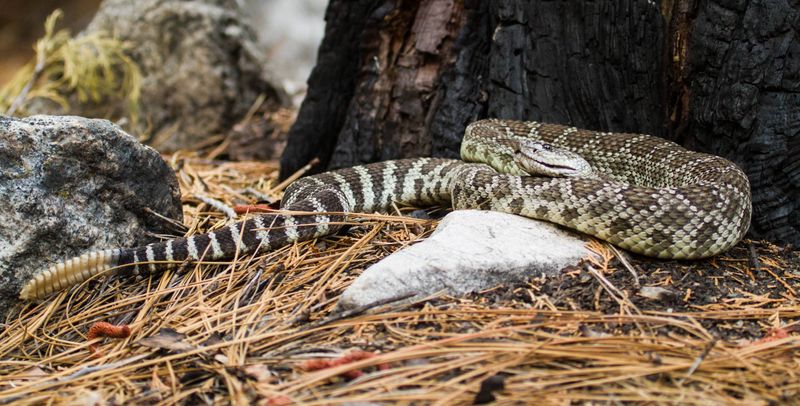
Sequoia and Kings Canyon National Parks are renowned for their towering giant sequoias and rich wildlife. These parks are home to black bears, mule deer, and a variety of bird species.
Generals Highway connects the two parks and offers numerous opportunities for wildlife viewing. The parks’ diverse ecosystems, from giant sequoia groves to alpine meadows, support a wide array of animals. Visitors should respect wildlife by keeping a safe distance and following park regulations. The awe-inspiring sequoias provide a majestic backdrop for observing nature’s wonders in these iconic parks.
Badlands National Park, South Dakota
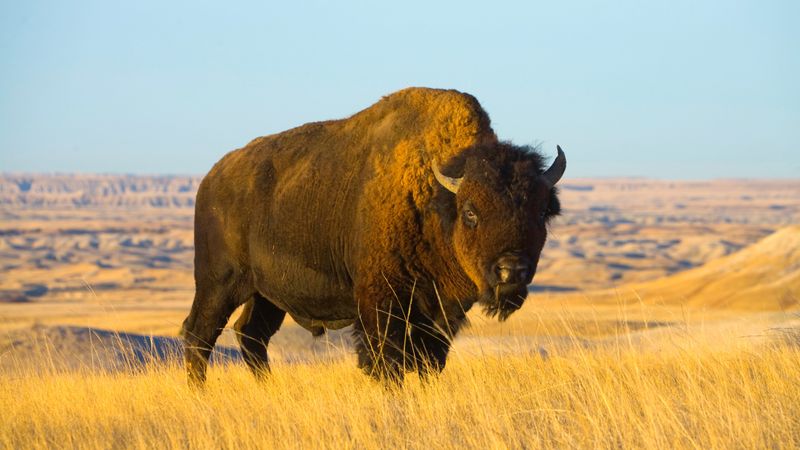
Badlands National Park, located in South Dakota, is a striking landscape of eroded buttes, pinnacles, and spires. The park is home to bison, bighorn sheep, and prairie dogs, offering unique viewing opportunities.
The Badlands Loop Road provides access to stunning vistas and wildlife habitats. Early morning and late afternoon are the best times to spot animals. The park’s rugged terrain and colorful geology make it a photographer’s dream. Visitors should respect the park’s wildlife and landscapes by staying on designated trails and maintaining a safe distance from animals.
Great Sand Dunes National Park, Colorado
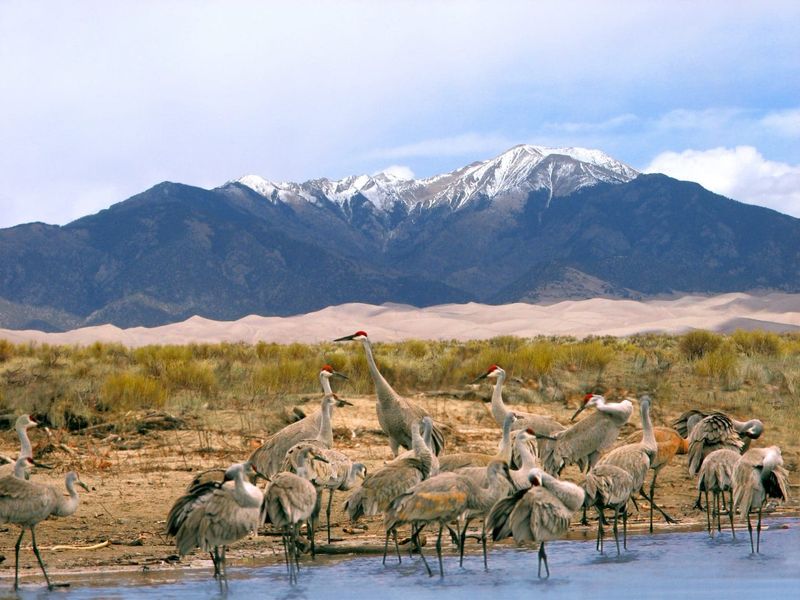
Great Sand Dunes National Park boasts the tallest sand dunes in North America. This unique landscape is home to a surprising variety of wildlife, including pronghorn antelope and black bears.
Visitors can enjoy hiking the dunes and exploring the diverse ecosystems that surround them. The Medano Pass Primitive Road offers a scenic drive with potential wildlife sightings. The park’s remote location provides a sense of solitude and tranquility, perfect for nature enthusiasts. With its dramatic landscapes and rich biodiversity, Great Sand Dunes offers a captivating experience for those seeking adventure.
Arches National Park, Utah
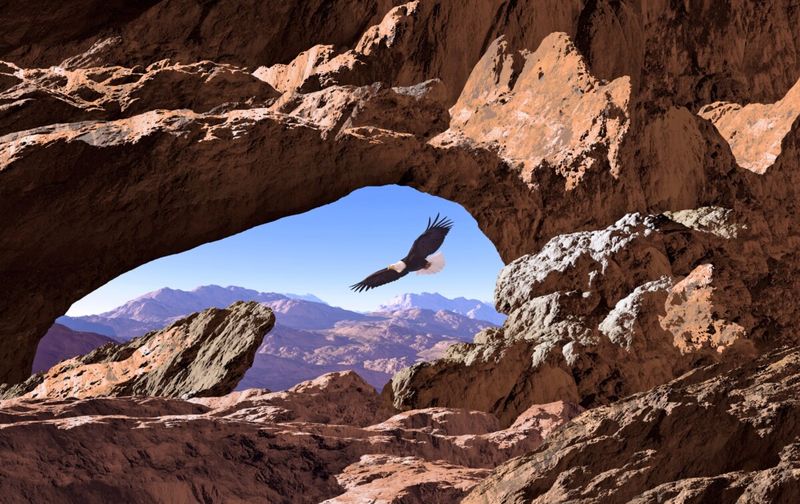
Arches National Park is famous for its over 2,000 natural stone arches and breathtaking desert landscapes. The park is home to desert hares, lizards, and a variety of birds.
Driving through the park provides access to stunning vistas and geological wonders. Hiking trails offer close encounters with the park’s unique flora and fauna. Visitors should prepare for hot weather and bring ample water and sun protection. Arches’ unique rock formations and diverse wildlife create a mesmerizing setting for exploration and contemplation, making it a must-visit for nature lovers and photographers alike.
Death Valley National Park, California and Nevada
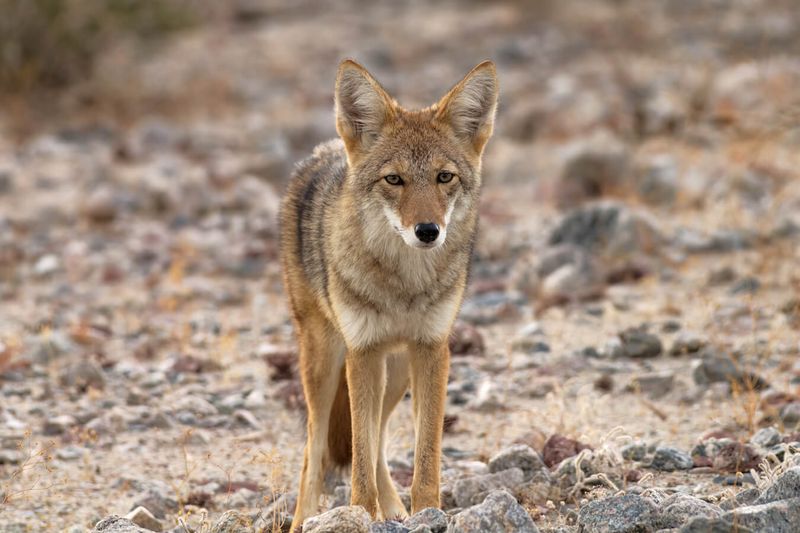
Death Valley National Park is the hottest and driest national park in the U.S., yet it supports a surprising array of wildlife. Coyotes, lizards, and scorpions are among the resilient creatures that call this park home.
Visitors can explore the park’s diverse landscapes, from salt flats to sand dunes, each offering unique wildlife viewing opportunities. It’s essential to visit during the cooler months and carry plenty of water. Death Valley’s extreme conditions and stark beauty create a unique environment for observing nature’s adaptability, making it a fascinating destination for adventurous travelers.
Redwood National and State Parks, California
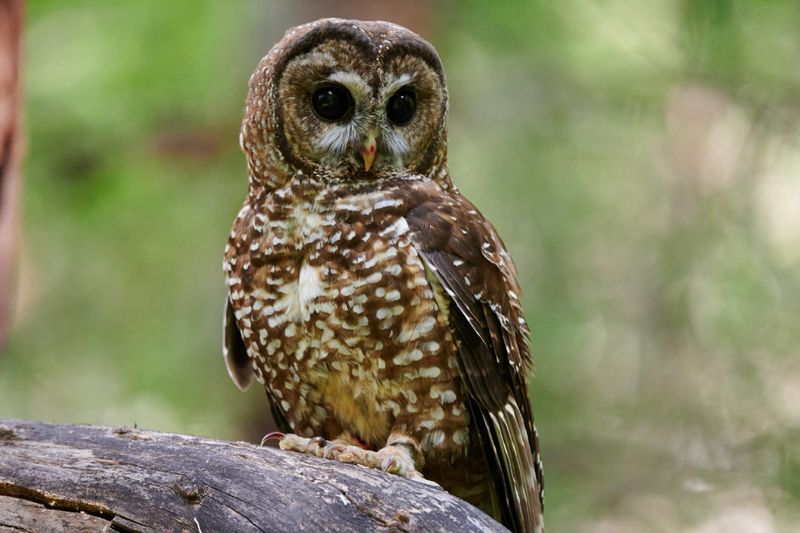
Redwood National and State Parks are home to the tallest trees on Earth and a diverse range of wildlife. Roosevelt elk, black bears, and a variety of bird species inhabit these ancient forests.
The park’s scenic drives and hiking trails provide ample opportunities for wildlife observation. Visitors can enjoy the tranquility of the lush forest and the majestic presence of the redwoods. Respect for nature and adherence to park guidelines ensure a safe and enjoyable visit. The towering trees and rich biodiversity make Redwood National and State Parks a must-see for nature enthusiasts.
Bryce Canyon National Park, Utah
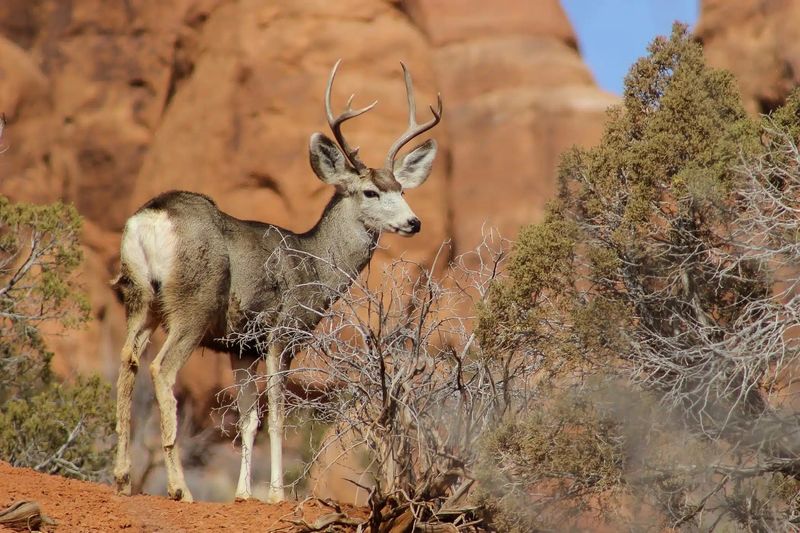
Bryce Canyon National Park is renowned for its colorful hoodoos and unique geology. The park’s diverse habitats support wildlife such as mule deer, prairie dogs, and a variety of birds.
The scenic drive offers breathtaking views and opportunities to spot wildlife, especially during the cooler parts of the day. Hiking trails lead visitors through the park’s stunning formations and diverse ecosystems. As always, respect for wildlife and adherence to park regulations are key to a safe and enjoyable visit. Bryce Canyon’s dramatic landscapes and abundant wildlife make it an unforgettable destination for nature lovers.

